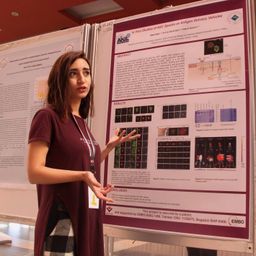Elucidating the role of chd7 in GABAergic network development in the brain using a zebrafish loss-of function model.
Mon statut pour la session
Priyanka Jamadagni1, Maximilian Breuer1, Tatiana
Cardinal2,Nicolas
Pilon2,3,4,Eric Samarut5, Kessen Patten1.
1INRS - Center Armand-Frappier Santé Biotechnologie, Biology,
Laval, Canada.
2Centre d'Excellence en
Recherche sur les Maladies Orphelines - Fondation Courtois (CERMO-FC),
Université du Québec à Montréal (UQAM), Montréal, QC, Canada.
3
Département des sciences biologiques, Université du
Québec à Montréal (UQAM), Montréal, QC, Canada.
4
Département de pédiatrie, Université de Montréal,
Montréal, QC, Canada
5Centre de recherche du centre hospitalier de
l’Université de Montréal CRCHUM- Montréal- Canada, Biology, Montreal, Canada.
Mutations in the ATP-dependent chromatin remodeller chromodomain, helicase, DNA binding (CHD) 7 are the primary cause of CHARGE syndrome and have been associated with autism spectrum disorder (ASD). However, the mechanisms by which mutations in CHD7 affect brain development and function are poorly understood. We have developed a zebrafish chd7 CRISPR/Cas9 knockout model, employing the suitability of this vertebrate model for the study of early neurodevelopment. chd7 knockout zebrafish larvae exhibit a small head phenotype, defects in craniofacial cartilage development and display aberrant axonal network development. The mutant fish further displayed hyperactivity particularly during the dark phase of the light-dark cycle, which previously in a zebrafish model for ASD has been suggested to be because of an aberrant inhibitory signalling in the brain. Interestingly, chd7 mutant fish show a significant decrease in GABAergic neurons in chd7 mutant and upon treatment with the GABA receptor antagonist PTZ exhibit an increased sensitivity to PTZ-induced seizures. Further, using an unbiased whole transcriptomic approach, genes involved in cell proliferation, migration and cell adhesion that are dysregulated in the chd7 mutants were identified. Particularly, aCHD7 target genepaqr3bis highly dysregulated, and anRT-qPCR analysis showed that PAQR3 gene expression was also highly decreased in CHD7 mutation-positive patient derived lymphoblastoid cell lines (LCLs) s compared to control LCLs.Our findings thus indicate loss of chd7 results in a deficit of inhibitory neurons via a potentially new pathway, suggesting an essential role of chd7 in the brain neuronal network development.












Discussion